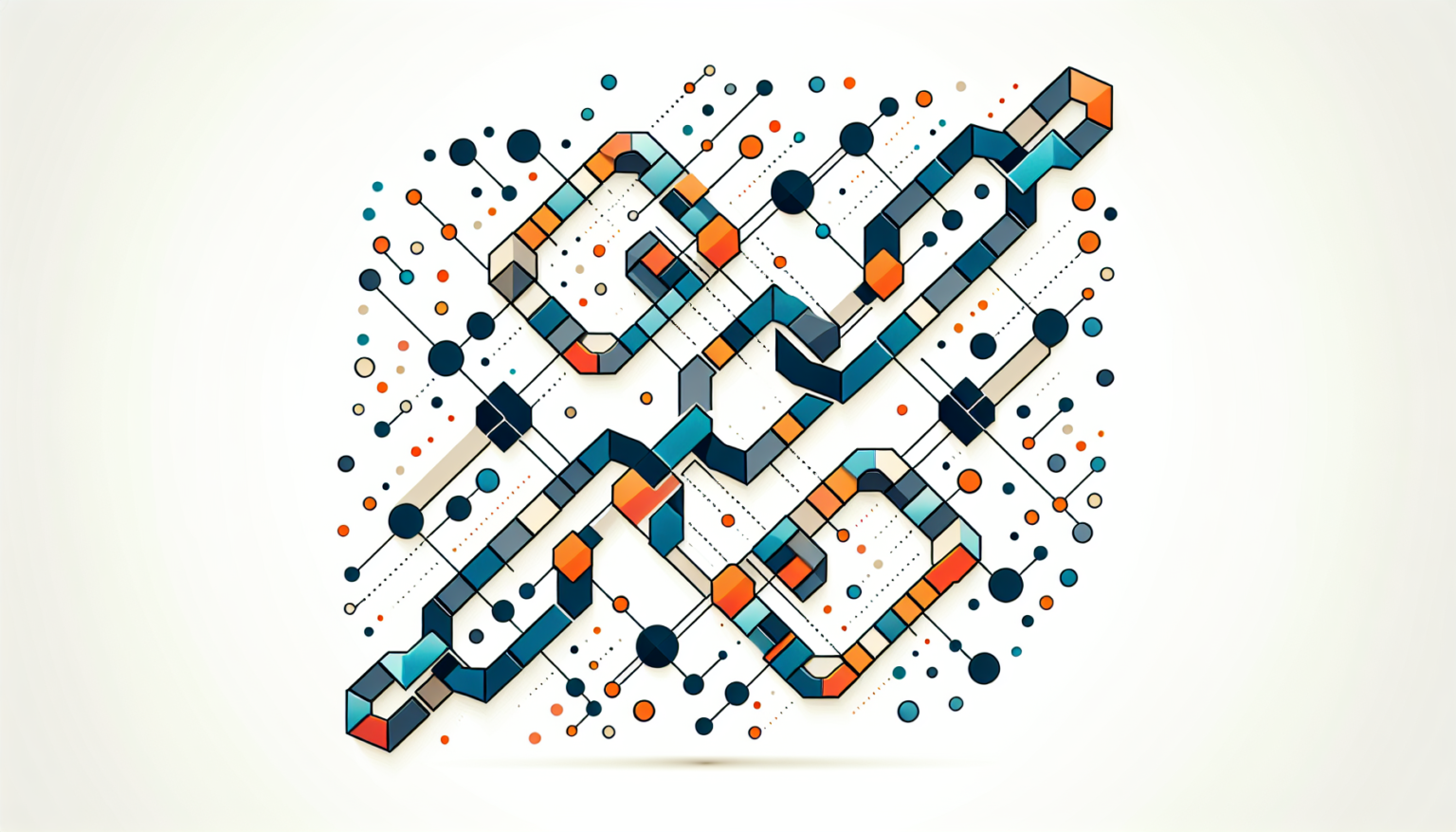What is Blockchain?
The Basics of Blockchain Technology
Blockchain is essentially a distributed ledger technology that records transactions across many computers in such a way that the registered transactions cannot be altered retroactively. This decentralized nature ensures that no single entity holds control over the entire database, promoting transparency and security.
How Does Blockchain Work?
At its core, blockchain operates on a series of blocks that contain transaction data. Each block is linked to the previous one, creating a continuous chain. When a new transaction occurs, it’s verified by a network of nodes (computers) and then added to a newly created block. Once finalized, this block becomes part of the database, and every participant in the network can see the update. This process ensures that multiple copies of the transaction are recorded, making it almost impossible to tamper with.
Key Characteristics of Blockchain
– **Decentralization**: Unlike centralized databases, blockchain distributes its data across a network, reducing the risk of single points of failure.
– **Transparency**: Transactions are visible to all participants, ensuring accountability and building trust.
– **Immutability**: Once data is recorded on the blockchain, it is nearly impossible to alter or delete it without consensus.
– **Security**: Cryptographic techniques protect data integrity, making unauthorized access extremely difficult.
What are Centralized Systems?
The Basics of Centralized Systems
Centralized systems operate under a single central controlling entity. This might be a single organization, server, or database that manages and controls all data and transactions. Most traditional databases, such as SQL databases, fall under this category, where data integrity and operations are managed from a centralized point.
How Centralized Systems Work
In a centralized system, all data is stored in a central server that oversees data creation, processing, and storage. Users connect to this server to perform activities, and their requests and transactions are processed through this single point of control. Because of this setup, centralized systems can often work faster when it comes to processing transactions, given that they don’t need to reach consensus among multiple nodes.
Key Characteristics of Centralized Systems
– **Central Control**: One authority has full control over data management and access.
– **Speed and Efficiency**: Faster transaction processing compared to decentralized counterparts, as it doesn’t require consensus.
– **Vulnerability**: Centralized databases are more prone to attacks; if the central server is compromised, the entire system is at risk.
– **Limited Transparency**: User access to data may be restricted, often leading to a lack of accountability.
Comparing Blockchain and Centralized Systems
Decentralization vs. Centralization
One of the most significant differences lies in the control structure. Blockchain’s decentralized approach limits control by any single entity, promoting collaborative governance among participants. Conversely, centralized systems place all authority and responsibility in one organization or server, making them easy targets for cyber attacks and data manipulation.
Transparency and Accountability
With blockchain technology, transparency is built-in, as all transactions are recorded and visible to all participants. In contrast, centralized systems often lack this level of visibility. Users can only see what the central authority permits, which can lead to issues of trust and accountability.
Security and Vulnerability
Although both systems implement security measures, their vulnerabilities differ greatly. In centralized systems, a successful attack on the central server can lead to widespread data breaches. Blockchain’s distributed nature makes it significantly more secure, as compromising one node does not affect the entire network.
Transaction Speed
If rapid transaction processing is a priority, centralized systems might have the upper hand. Transactions can be processed quickly as they rely on a single point of control. In contrast, blockchain networks may take longer to process due to the consensus mechanism required to validate transactions across many nodes.
Cost Considerations
Centralized systems may appear more cost-effective initially because they require less infrastructure compared to blockchain, which often needs numerous nodes and advanced technology. However, organizations must account for ongoing costs related to security, compliance, and potential downtime or data breaches that can arise from centralized control.
Use Cases for Blockchain and Centralized Systems
When to Use Blockchain?
Blockchain shines in scenarios where transparency, security, and trust are critical. It’s ideal for use cases such as:
– **Cryptocurrencies**: Where decentralized currency is essential for peer-to-peer transactions.
– **Supply Chain Management**: Enabling traceability of products from source to consumer, improving accountability.
– **Voting Systems**: Providing a tamper-proof method for recording votes to enhance democratic processes.
When to Use Centralized Systems?
Centralized systems are well-suited for environments where speed and efficiency are paramount. Some common applications include:
– **Banking Systems**: Where fast transaction times are necessary and high security must be managed by trusted institutions.
– **Enterprise Resource Planning (ERP)**: Systems where centralized control over an organization’s data allows for streamlined operations.
– **Web Hosting Services**: Where control over the server is crucial for management and data retrieval.
The Future of Blockchain and Centralized Systems
Trends and Predictions
The advancement of both blockchain technology and centralized systems is growing, with organizations continuously exploring the benefits of each. Hybrid models that integrate features from both worlds are also emerging, offering tailored solutions to various industries.
Innovation and Evolution
As technology evolves, we can expect to see more innovative applications of blockchain that can address current limitations, such as scalability. Meanwhile, centralized systems will likely enhance their security measures to compete effectively and mitigate risks.
Final Thoughts
Understanding the differences between blockchain and centralized systems allows businesses and individuals to make informed decisions based on their unique needs. By grasping these distinctions, stakeholders can choose the right technology for their applications and navigate the complexities of this dynamic landscape.








